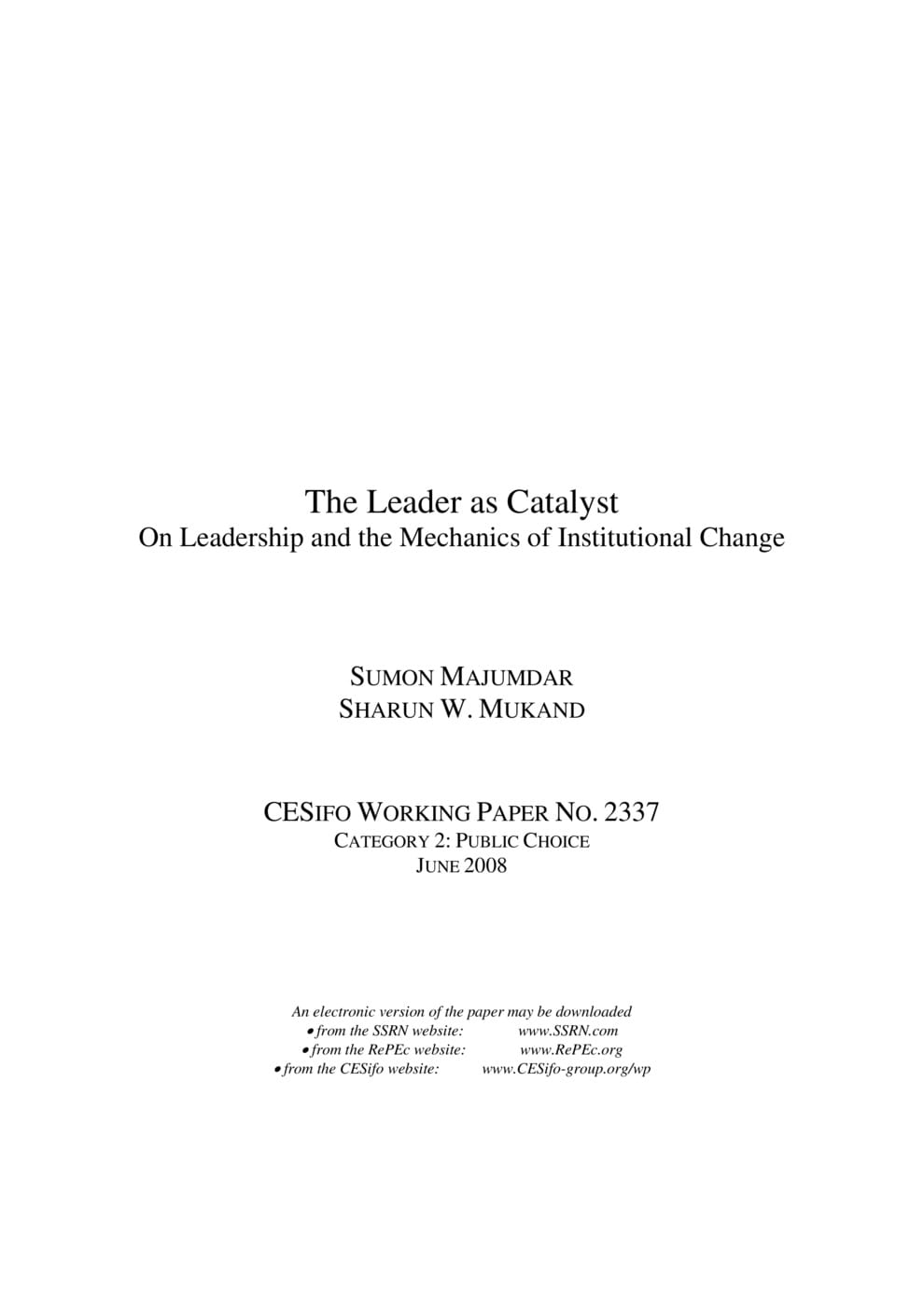The Leader as Catalyst – on Leadership and the Mechanics of Institutional Change
CESifo, Munich, 2008
CESifo Working Paper No. 2337

Individual leaders have been central to the transformation of political institutions, organizations and many instances of social and economic reform. Why are some leaders able to take advantage of opportunities to successfully catalyze large-scale change while others fail? In this paper we argue that the key to understanding a leader’s effectiveness lies in dissecting the symbiotic nature of the leader-follower relationship. While the expected dynamism of a leader attracts followers, at the same time, followers empower the leader and contribute to his dynamism. This two-way leader-follower interaction can endogenously give rise to threshold effects: ‘small’ differences in leader ability can have a large impact on the degree of effective leadership and dramatically alter the prospects for change. The framework also naturally allows us to explore when individuals may deliberately prefer to follow an ambitious leader with very different preferences rather than a leader with more congruent preferences. Moreover, by empowering the self-interested ambitious leader, such followership may make him a more effective agent of (both good and bad) change.
Public Choice